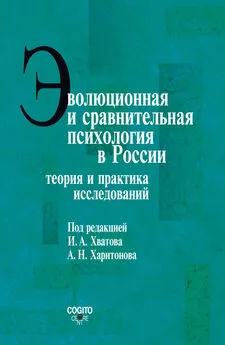Коллектив авторов - Звездные войны. Психология киновселенной
- Название:Звездные войны. Психология киновселенной
- Автор:
- Жанр:
- Издательство:Литагент 5 редакция
- Год:2016
- Город:Москва
- ISBN:978-5-699-88149-9
- Рейтинг:
- Избранное:Добавить в избранное
-
Отзывы:
-
Ваша оценка:
Коллектив авторов - Звездные войны. Психология киновселенной краткое содержание
Звездные войны. Психология киновселенной - читать онлайн бесплатно ознакомительный отрывок
Интервал:
Закладка:
Jung, C. G. (1959). Aion: Researches into the phenomenology of the self (2nd ed.). Princeton, NJ: Princeton University Press.
Jung, C. G. (1961). Memories, dreams, reflections. New York, NY: Random House.
Jung, C. G. (1962). Symbols of transformation (vol. 2). New York, NY: Harper.
Jung, C. G. (1966). Two essays on analytical psychology (3rd ed.). Princeton, NJ: Princeton University Press.
Jung, C. G. (1970). The structure and dynamics of the psyche (2nd ed.). Princeton, NJ: Princeton University Press.
Query Note: Luceno is not cited in the Notes for this chapter. Delete?
Luceno, J. (2014). The unifying Force (Star Wars: The new Jedi Order). New York, NY: Del Rey.
McNeely, D. (2010). Becoming: An introduction to Jung's concept of individuation. Carmel, CA: Fisher King.
Stein, M. (2006). The principle of individuation: Toward the development of human consciousness. Wilmette, IL: Chiron.
Wallace, D. (2011). The Jedi path: A manual for students of the Force. London, UK: Titan.
Zweig, C, & Abrams, J. (1991). Introduction: The shadow side of everyday life.
In C. Zweig & J. Abrams (Eds.), Meeting the shadow: The hidden power of the dark side of human nature (pp. xvi-xxv). New York, NY: Tarcher/Putnam.
11
Athens, О. (2014, May 4). Star Wars: Luke Skywalker and the Hero's Journey. Geeks of Doom; http://www.geeksofdoom.com/2014/05/04/luke-skywalker-heros-journey.
Bern, S. L. (1974). The measurement of psychological androgyny. Journal of Consulting and Clinical Psychology, 42(2), 155–162.
Bern, S. L. (1981). Gender schema theory: A cognitive account of sex typing source. Psychological Review, 88(4), 354.
Campbell, J. (1949). The hero with a thousand faces. Princeton, NJ: Princeton University Press.
Hamilton, E. (1942). Mythology. New York, NY: Back Bay Books.
Jung, C. G. (1948/1969). The archetypes and the collective unconscious (R. F. C. Hull, Trans.). In H. Read et al. (Series Eds.), The Collected Works of C. G. Jung (Vol. 9, pt. 1, 2nd ed.). Princeton, NJ: Princeton University Press.
Jung, C. G. (1951/1983). The essential Jung. A. Storr (Ed.). Princeton, NJ: Princeton University Press.
Larsen, S., & Larsen, R. (2002). Joseph Campbell: A fire in the mind. Rochester, VT: Inner Traditions.
Murdock, M. (1990). The Heroine's Journey: Women's quest for wholeness. Boston, MA: Shambhala.
Sands, F. (1961, September 10). The trouble with women. The Pittsburgh Post-Gazette, 35(41), 7.
Read et al. (Series Eds.), The Collected Works of C. G. Jung (vol. 9, pt. 1, 2nd ed.). Princeton, NJ: Princeton University Press.
Waid, M., & Dodson, T. (2015). Star Wars: Princess Leia, 1(1–5). New York, NY: Marvel Worldwide, LLC.
12
Allport, G. W, & Ross, J. M. (1967). Personal religious orientation and prejudice. Journal of Personality and Social Psychology, 5(4), 432–443.
Batson, C. D., Schoenrade,P., &Ventis, W. L. (1993). Religion and the individual: A social psychological perspective. New York, NY: Oxford University Press.
Baumeister, R. E, Vohs, K. D., & Tice, D. M. (2007). The strength model of self-control. Current Directions in Psychological Science, 16(6), 351–355.
DeWall, N. C, Baumeister, R. T, Stillman, T. E, &Gailliot, M. T. (2007). Violence restrained: Effects of self-regulation and its depletion on aggression. Journal of Experimental Social Psychology, 43(1), 62–76.
Ecklund, E. H., & Scheitle, C. (2014, February). Religious communities, science, scientists, and perceptions: A comprehensive survey. Paper presented at the annual meeting of the American Association for the Advancement of Science, Chicago, IL.
Heflick, N. A., & Goldenberg, J. L. (2012). No atheists in foxholes: Arguments for (but not against) life after death buffer mortality salience effects for atheists. British Journal of Social Psychology, 51(2), 385–392.
Hood, В. (2009). Supersense: Why we believe in the unbelievable. New York, NY: HarperCollins.
Hunsberger, B. (1995). Religion and prejudice: The role of religious fundamentalism, quest, and right-wing authoritarianism. Journal of Social Issues, 51(2), 113–129.
James, W. (1899, June 7). Letter to Mrs. Henry Whitman. Critical Animal; http://criticalanimal.blogspot.com/2014/04/the-invisible-moral-molecular-forces-of.html.
James, W. (1902). The varieties of religious experience: A study in human nature. New York, NY: Longmans, Green.
Kay, A. C, Whitson, J., Gaucher, D., & Galinski, A. D. (2009). Compensatory control: Achieving order through the mind, our institutions, and the heavens. Current Directions in Psychological Science, 18(5), 264–268.
Leak, G. K., & Finken, L. L. (2011). The relationship between the constructs of religiousness and prejudice: A structural equation model analysis. International Journal for the Psychology of Religion, 21(1), 43–63.
Mar, R. A., & Oatley, K. (2008). The function of fiction is the abstraction and simulation of social experience. Perspectives on Psychological Science, 3(3), 173–192.
McCullough, M. E., & Willoughby, B. (2009). Religion, self-regulation, and self-control: Associations, explanations, and implications. Psychological Bulletin, 135(1), 69–93.
Park, C. L. (2005). Religion as a meaning-making framework in coping with life stress. Journal of Social Issues, 61(4), 707–729.
Rounding, K., Lee, A., Jacobson, J. A., & Ji, L. (2012). Religion replenishes self-control. Psychological Science, 23(6), 635–642.
Routledge, C. (2014, November 3). To feel meaningful is to feel immortal. Scientific American; http://blogs.scientificamerican.com/mind-guest-blog/2014/11/03/to-feel-meaningful-is-to-feel-immortal/.
Solomon, S., Greenberg, J., & Pyszczynski, T. (2004). The cultural animal: Twenty years of terror management theory and research. In J. Greenberg, S. L. Koole, & T. Pyszczynski (Eds.), Handbook of experimental existential psychology (pp. 13–34). New York, NY: Guilford.
Steger, M. F., & Frazier, P. (2005). Meaning in life: One link in the chain from religiousness to well-being. Journal of Counseling Psychology, 52(4), 574–582.
Sullivan, D., & Greenberg, J. (Eds.) (2013). Death in classic and contemporary film: Fade to black. London, UK: Palgrave Macmillan.
Tangney, J. P., Baumeister, R. F., & Boone, A. L. (2004). High self-control predicts good adjustment, less pathology, better grades, and interpersonal success. Journal of Personality, 72(2), 271–324.
Vail, K. E., Rothschild, Z. K., Weise, D., Solomon, S., Pyszczynski, T, & Greenberg, J. (2010). A terror management analysis of the psychological functions of religion. Personality and Social Psychology Review, 14(1), 84–94.Cohen, D., & Schmidt, J. P. (1979). Ambiversion: Characteristics of midrange responders on the introversion-extraversion continuum. Journal of Personality Assessment, 43(5), 513–516.
Ensari, N., Riggio, R. E., Christian, J., & Carslaw, G. (2011). Who emerges as a leader? Meta-analyses of individual differences as predictors of leadership emergence. Personality and Individual Differences, 51(4), 532–536.
Jung, C. G. (1921). Psychologische typen. Zurich, Switzerland: Rascher Verlag. Lucas, R. E., Le, K., & Dyrenforth, P. S. (2008). Explaining the extraversion/positive affect relation: Sociability cannot account for extraverts' greater happiness. Journal of Personality, 76(3), 385–414.
Pychyl, T. A. (2010, January 1). An enemy of the good life: Happiness and personality. Psychology Today; https://www.psychologytoday.com/blog/dont-delay/201001/enemy-the-good-life-happiness-and-personality.
Savelsbergh, M., & Staebler, B. (1995). Investigating leadership styles, personality preferences, and effective teacher consultation. Journal of Educational and Psychological Consultation, 6(3), 277–286.
Tamir, M. (2009). Differential preferences for happiness: Extraversion and trait-consistent emotion regulation. Journal of Personality, 77(2), 447–470.
Файлы силы
Cohen, D., & Schmidt, J. P. (1979). Ambiversion: Characteristics of midrange responders on the introversion-extraversion continuum. Journal of Personality Assessment, 43(5), 513–516.
Ensari, N., Riggio, R. E., Christian, J., & Carslaw, G. (2011). Who emerges as a leader? Meta-analyses of individual differences as predictors of leadership emergence. Personality and Individual Differences, 51(4), 532–536.
Jung, C. G. (1921). Psychologische typen. Zurich, Switzerland: Rascher Verlag. Lucas, R. E., Le, K., & Dyrenforth, P. S. (2008). Explaining the extraversion/positive affect relation: Sociability cannot account for extraverts' greater happiness. Journal of Personality, 76(3), 385–414.
Pychyl, T. A. (2010, January 1). An enemy of the good life: Happiness and personality. Psychology Today; https://www.psychologytoday.com/blog/dont-delay/201001/enemy-the-good-life-happiness-and-personality.
Savelsbergh, M., & Staebler, B. (1995). Investigating leadership styles, personality preferences, and effective teacher consultation. Journal of Educational and Psychological Consultation, 6(3), 277–286.
Tamir, M. (2009). Differential preferences for happiness: Extraversion and trait-consistent emotion regulation. Journal of Personality, 77(2), 447–470.
Глава 4
13
Asch, S. E. (1951). Effects of group pressure on the modification and distortion of judgments. In H. Guetzkow (Ed.), Groups, leadership and men (pp. 177–190). Pittsburgh, PA: Carnegie Press.
Blass, T. (2009). From New Haven to Santa Clara: A historical perspective on the Milgram obedience experiments. American Psychologist, 64(1), 37–45.
Burger, J. M. (2009). Replicating Milgram: Would people still obey today? American Psychologist, 64(1), 1–11.
Darley, J. M., & Latané, B. (1968). Bystander intervention in emergencies: Diffusion of responsibility. Journal of Personality and Social Psychology, 8(4), 377–383. Fischer, P., Krueger, J. I., Greitemeyer, Т., Vogrincic, C, Kastenmuller, A., Frey, D., Helene, M., Wicher, M., & Kainbacher, M. (2011). The bystander-effect: A meta-analytic review on bystander intervention in dangerous and non-dangerous emergencies. Psychological Bulletin, 137(4), 517–537.
Haney, C, Banks, C, & Zimbardo P. (1973). A study of prisoners and guards in a simulated prison. Naval Research Reviews, 26(9), 1–17.
Johnson, R. D., & Downing, I. L. (1979). Deindividuation and valence of cues: Effects on prosocial and antisocial behavior. Journal of Personality and Social Psychology, 37(9), 1532–1538.
Langley, T. (2012). Batman and psychology: A dark and stormy knight. New York, NY: Wiley.
Latané, В., & Rodin, J. (1969). A lady in distress: Inhibiting effects of friends and strangers on bystander intervention. Journal of Experimental Social Psychology, 5(2), 189–202.
Mann, L. (1981). The baiting crowd in episodes of threatened suicide. Journal of Personality and Social Psychology, 41(4), 703–709.
Manning, R., Levine, M., & Collins, A. (2007). The Kitty Genovese murder and the social psychology of helping: The parable of the 38 witnesses. American Psychologist, 62(6), 555–562.
Milgram, S. (1963). Behavioral study of obedience. Journal of Abnormal and Social Psychology, 67(4), 371–378.
Milgram, S. (1974/2009). Obedience to authority. New York, NY: Harper Perennial.
Postmes, Т., & Spears, R. (1998). Deindividuation and antinormative behavior: A meta-analysis. Psychological Bulletin, 123(3), 238–259.
Reicher, S., & Haslam, S. A. (2006). Rethinking the psychology of tyranny: The BBC prison study. British Journal of Social Psychology, 45(1), 1–40.
Читать дальшеИнтервал:
Закладка:










